
NGC 5034 is a spiral galaxy in the constellation of Ursa Minor. NGC 5034 is its New General Catalogue designation. It is located about 401 million light-years from the Sun. It was discovered on April 7, 1793, by William Herschel.

NGC 3260 is an elliptical galaxy in the constellation Antlia. It is a member of the Antlia Cluster, which lies about 40.7 megaparsecs away. It was discovered on May 2, 1834 by the astronomer John Herschel.

NGC 119 is an unbarred lenticular galaxy with an apparent magnitude of 13.0 located in the constellation Phoenix. It was discovered on October 28, 1834 by the astronomer John Herschel.
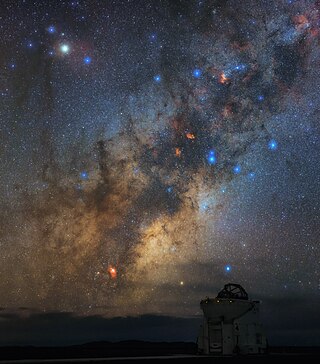
WR 93b is a Wolf-Rayet star in the constellation Scorpius, an extremely rare star on the WO oxygen sequence. It appears near NGC 6357 in the tail of the scorpion.
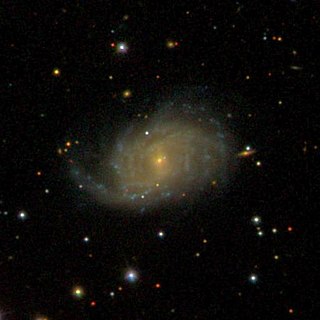
NGC 7046 is a barred spiral galaxy located 193 million light-years away in the constellation of Equuleus. With a high radial velocity of 4,130 km/s, the galaxy is drifting away from the Milky Way. NGC 7046 has an apparent size of 0.990 arcmin, and at its current distance, it has an estimate diameter of 192,639 light years. NGC 7046 has a morphological type of "SBc", which indicates that it is a barred spiral galaxy with a definite bulge.

NGC 4500 is a barred spiral galaxy in the constellation Ursa Major. The galaxy was discovered on April 17, 1789 by William Herschel. It is a blue compact galaxy.

NGC 708 is an elliptical galaxy located 240 million light-years away in the constellation Andromeda and was discovered by astronomer William Herschel on September 21, 1786. It is classified as a cD galaxy and is the brightest member of Abell 262. NGC 708 is a weak FR I radio galaxy and is also classified as a type 2 Seyfert galaxy.
NGC 7199 is a barred spiral galaxy registered in the New General Catalogue. It is located in the direction of the Indus constellation. It was discovered by the English astronomer John Herschel in 1835 using a 47.5 cm reflector.
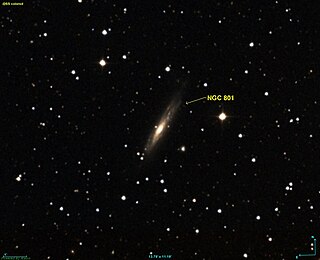
NGC 801 is a spiral galaxy with an active galaxy core in the constellation Andromeda. It is estimated to be 174 million light-years from the Milky Way and has a diameter of approximately 174,400 light-years. The object was discovered on September 20, 1885 by the American astronomer Lewis A. Swift.
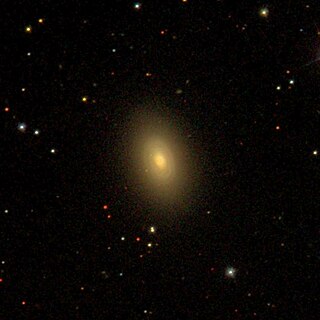
NGC 940 is a lenticular galaxy in the constellation Triangulum. It is estimated to be 222 million light-years from the Milky Way and has a diameter of approximately 80,000 ly. NGC 940 was discovered by Heinrich d'Arrest.

NGC 2803, also known as PCG 26181, is an elliptical or lenticular galaxy in the zodiac constellation Cancer. It was discovered March 21, 1784, by William Herschel. It is interacting with NGC 2802.
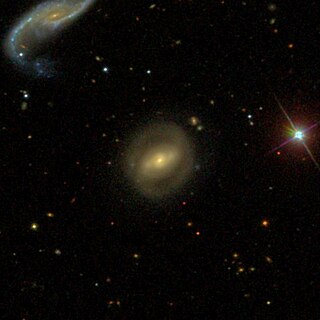
NGC 4614 is a barred lenticular galaxy in the New General Catalog. It is located in the constellation of Coma Berenices. It was discovered in 1864 by the German astronomer Heinrich d'Arrest with a 11.9 inch diameter lens type telescope.

HD 27022, also known as HR 1327, is a star located in the northern circumpolar constellation Camelopardalis. The object has also been designated as 20 H. Camelopardalis, but is not commonly used in modern times. It has an apparent magnitude of 5.27, allowing it to be faintly visible to the naked eye. Based on parallax measurements from Gaia DR3, the star has been estimated to be 347 light years away. It appears to be approaching the Solar System, having a heliocentric radial velocity of −19.5 km/s.
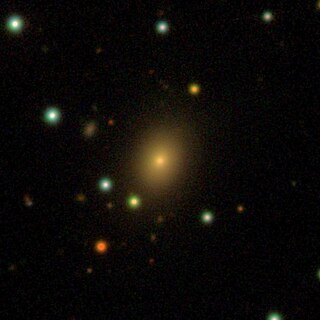
NGC 719 is a lenticular galaxy in the constellation Aries. It was first discovered, on 24 November 1861, by Heinrich d'Arrest.
HD 37289, also known as HR 1916, is a solitary, orange hued star located in the northern circumpolar constellation Camelopardalis. It has an apparent magnitude of 5.61, making it faintly visible to the naked eye under ideal conditions. Based on parallax measurements from the Gaia spacecraft, the object is estimated to be 308 light years distant. It appears to be approaching the Sun, having a heliocentric radial velocity of −20.7 km/s.
HD 58425, also known as HR 2830, is an astrometric binary located in the northern circumpolar constellation Camelopardalis. It is faintly visible to the naked eye as an orang point of light at an apparent magnitude of 5.64. Based on parallax measurements from Gaia DR3, the system is estimated to be 470 light years away from Earth. It appears to be rapidly receding from the Sun, having a heliocentric radial velocity of 58.6 km/s. HD 58425 is listed as 54 Ursae Majoris in Johann Hevelius' catalogue, but this was dropped after the official IAU's official constellation borders were drawn.
HD 32820, also known as HR 1651, is a yellowish-white hued star located in the southern constellation Caelum, the chisel. It has an apparent magnitude of 6.3, placing it near the limit of naked eye visibility. The object is located relatively close at a distance of 103 light years based on parallax measurements from Gaia DR3, but is receding with a heliocentric radial velocity of 29.8 km/s.

HD 196737, also designated as HR 7893, is a solitary orange hued star located in the southern constellation Microscopium. It has an apparent magnitude of 5.47, allowing it to be faintly visible to the naked eye. The object is located relatively close at a distance of 241 light years based on Gaia DR3 parallax measurements, but is receding with a heliocentric radial velocity of 14.2 km/s. At its current distance, HD 196737's brightness is diminished by 0.14 magnitudes due to interstellar dust. It has an absolute magnitude of 1.17.

HD 31134, also designated as HR 1561, is a solitary star located in the northern circumpolar constellation Camelopardalis, the giraffe. It is faintly visible to the naked eye as a white-hued star with an apparent magnitude of 5.74. Gaia DR3 parallax measurements place it 473 light years away. It appears to be approaching the Solar System with a heliocentric radial velocity of −15.1 km/s. At its current distance, HD 31134's brightness is diminished by 0.35 magnitudes due to interstellar dust. It has an absolute magnitude of +0.19.














